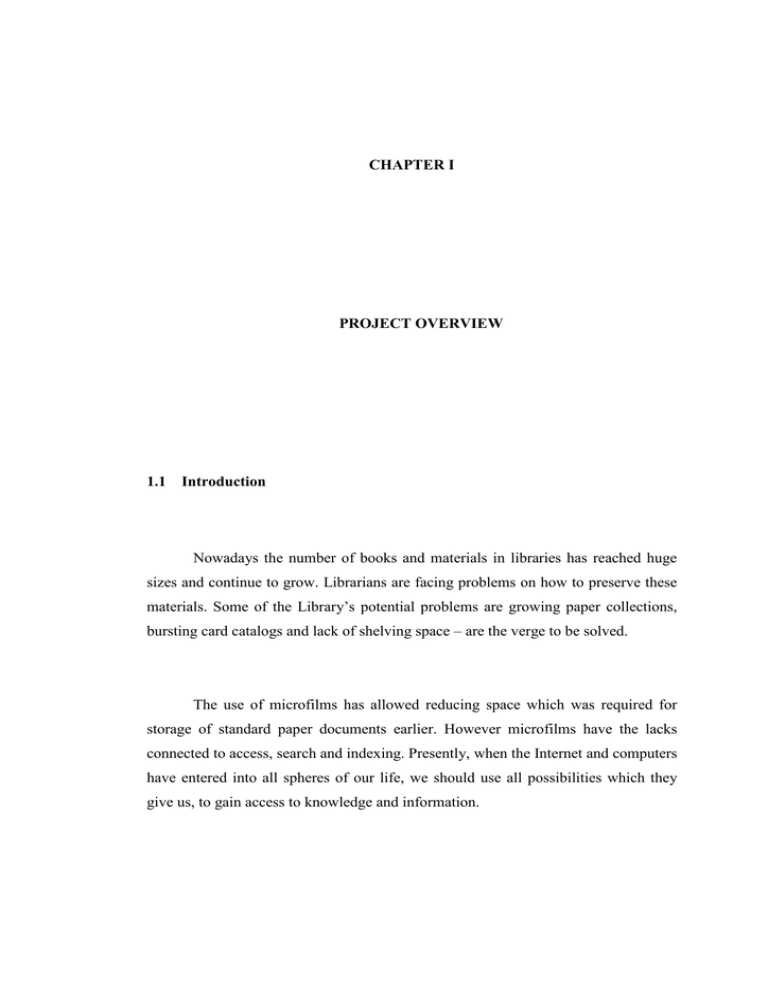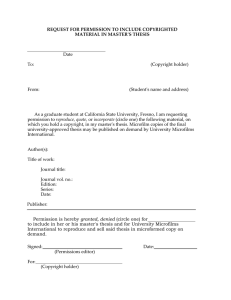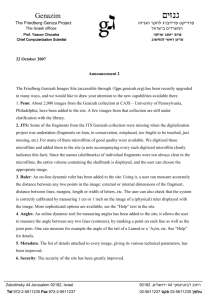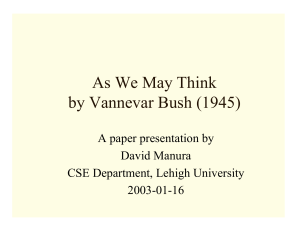CHAPTER I 1 PROJECT OVERVIEW
advertisement

CHAPTER I 1 PROJECT OVERVIEW 1.1 Introduction Nowadays the number of books and materials in libraries has reached huge sizes and continue to grow. Librarians are facing problems on how to preserve these materials. Some of the Library’s potential problems are growing paper collections, bursting card catalogs and lack of shelving space – are the verge to be solved. The use of microfilms has allowed reducing space which was required for storage of standard paper documents earlier. However microfilms have the lacks connected to access, search and indexing. Presently, when the Internet and computers have entered into all spheres of our life, we should use all possibilities which they give us, to gain access to knowledge and information. 2 1.2 Background of the problem The libraries all over the world as a source of long-term preservation are using the micrographics technology. There is a lot of information which stored on microfilms are closed for wide access because the data storage system based on microfilms does not support simultaneous access of several users to the same document. Since the microfilm format is not conductive to be accessed or delivered at locations other than the Library microfilm reading room, many library users refrain themselves from using microfilm. In many instances the user's adverse attitude toward microforms in general, (microfilm/microfiche in particular) is the result of such factors as inadequate cataloging , inefficient bibliographic access, scratches on film surface, breaks and smudges, making the text illegible, and in some libraries, dungeon-like microform reading areas and in some cases, even complains about eye fatigue because of poor, inadequate lighting. Also there is variety of the problems connected with storage of microfilms: a constant climate the control, purchase of the special equipment. 1.3 Statement of the problem The problems to be tackled in this project are: i) How can we computerize the process of microfilming? ii) How to digitize the retrospective theses collection stored in microfilm format iii) How to make microfilm collections more accessible by the librarians and the users of library? 3 1.4 Project objective The objectives for the proposed system are: i) To study and analyze existing methods / techniques to convert microfilm into digital format ii) To study existing methods of cataloging and indexing of digital documents iii) To design and test a web-based system to store and organize digitized microfilms (retrospective theses) for easy access and retrieval iv) To formulate organizational strategies for the implementation of the system. 1.5 Project scope This project, Document Management and Filing Archival System, is developed focusing on organizing and cataloging of retrospective theses collection of PSZ Library digitized from microfilms. This section is to define the boundary of the project and consist of system functionalities, data used, software, hardware and platform requirements. It also describes features available and the system’s user. Software requirements needed are PHP as a programming language, Macromedia Dreamweaver MX 2004 to design interfaces, Microsoft SQL for 4 database, Microsoft Office 2003, Microsoft Project 2003, and Microsoft Visio Professional 2003 for project documentation. This proposed system will be used by librarians and library’s users with an authorized access. 1.6 Importance of project The system is focused mainly on librarians and users of library. After implementation of this system it will become possible to refuse using microfilms as preservation medium which allow saving considerable amount of money resources. Some of the expected significant importances are as follows: • Simultaneous access to the archive of retrospective theses • Reduce time of accessing microfilms • The number of library users who want to view and work with these retrospective theses increase 1.7 Chapter summary In this chapter, introduction of the project, project objective, project scope, problem background and statement of problem background have been discussed. 5 The development of the proposed system was said to be a solution to the problems and challenges faced by libraries when they archive the historical data using microfilm technology. Te new system will be done to help both users and librarians. Users can easy access and view the information from archives in educational purposes. For librarians the Document Management and Filing Archival System helps to automate the process of storing, retrieval and searching historical data.



